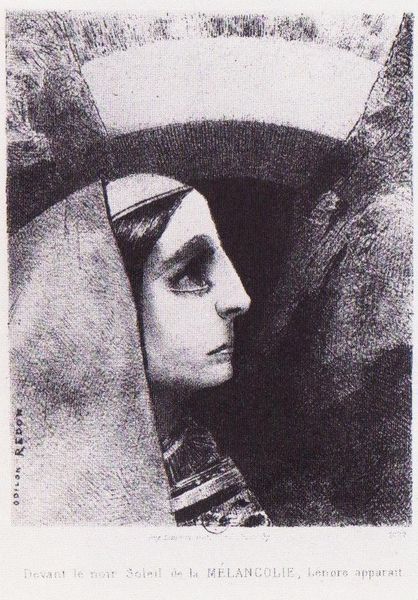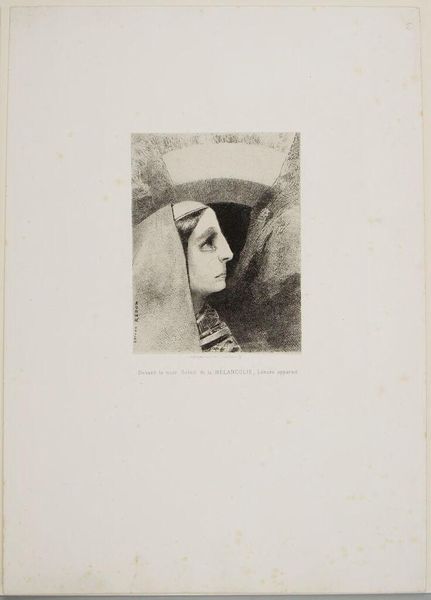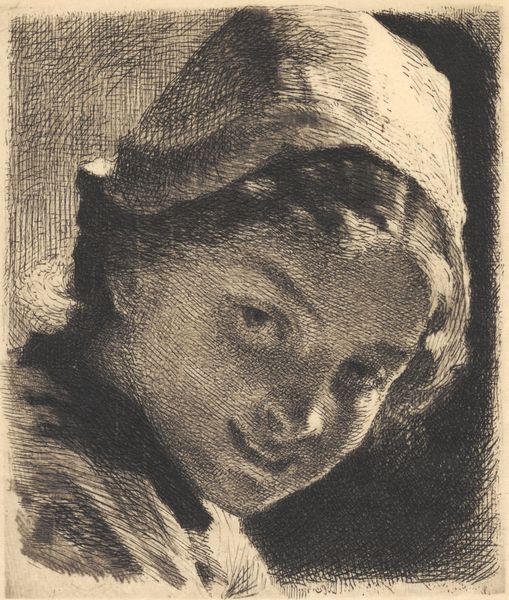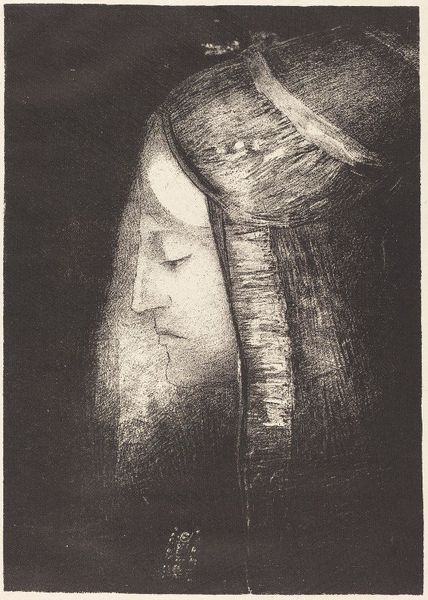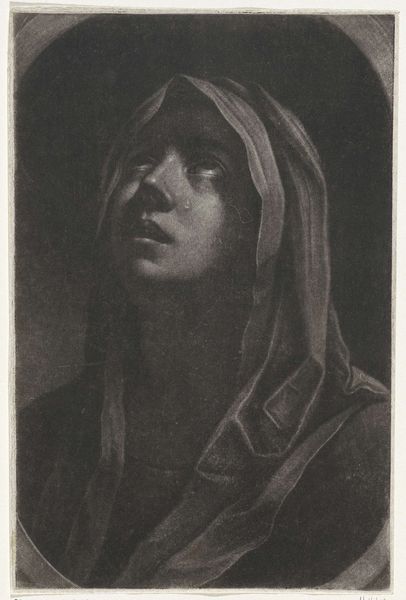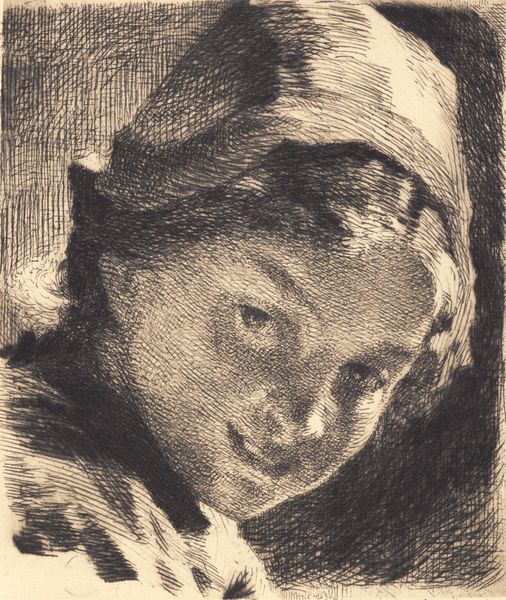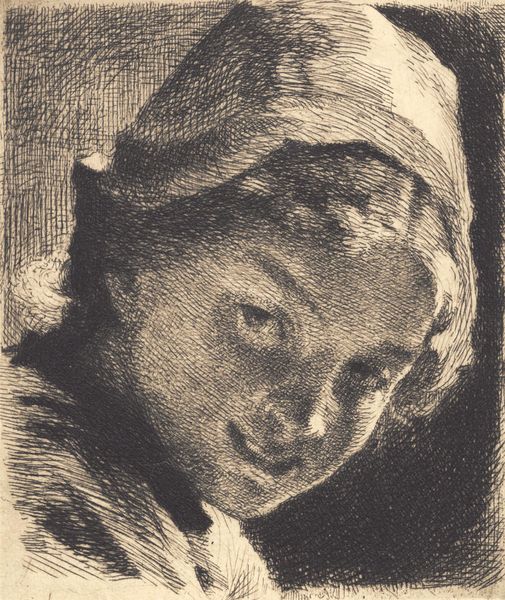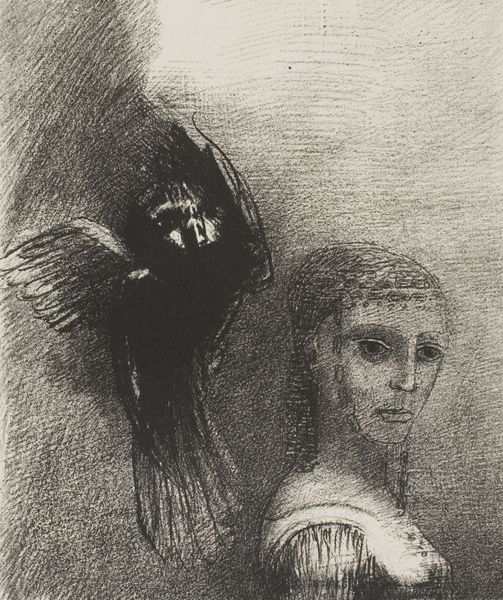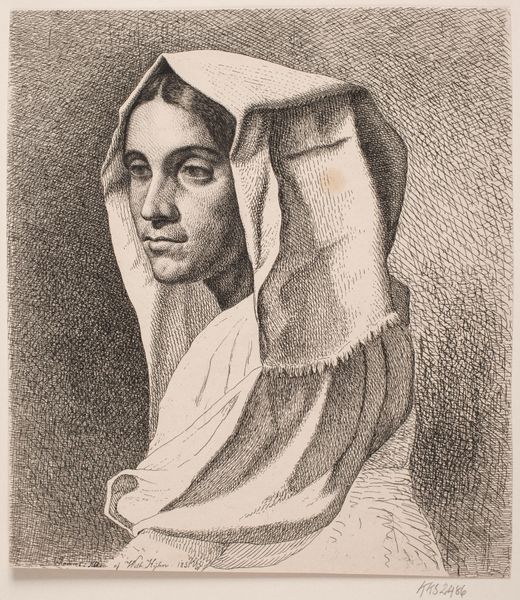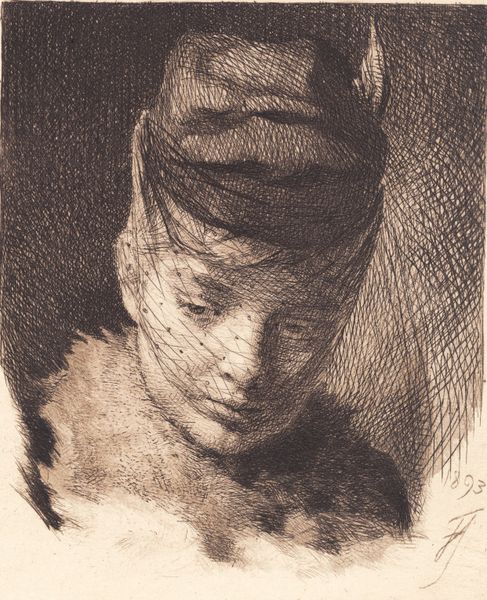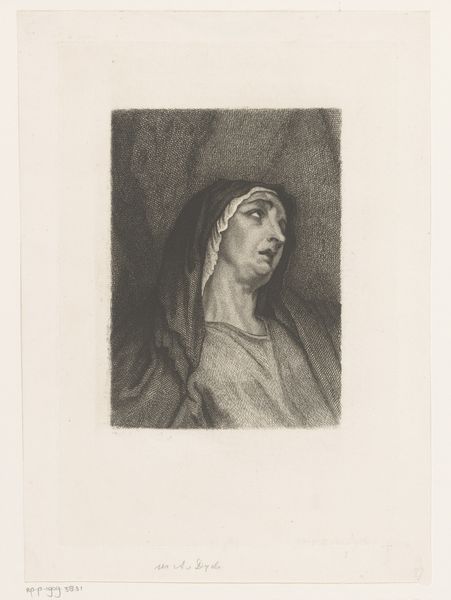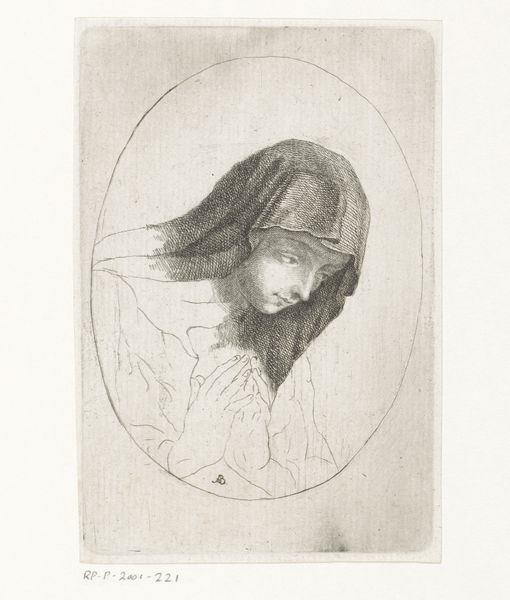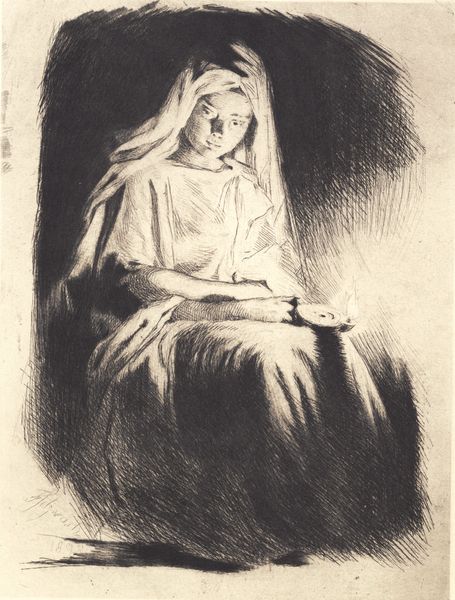
Before the Black Sun of Melancholy, Lenore Appears, plate two from To Edgar Poe 1882
0:00
0:00
Dimensions: 168 × 128 mm (image/chine); 418 × 305 mm (sheet)
Copyright: Public Domain
Curator: Before us hangs "Before the Black Sun of Melancholy, Lenore Appears, plate two from To Edgar Poe" a lithograph by Odilon Redon created in 1882. What's your first take? Editor: Ethereal, yet heavy. All those shades of grey—they're almost palpable. It feels like a memory trying to surface from a sea of emotion. Curator: Indeed. Redon's prints, like this one, often evoke dreams and the subconscious. Notice how he uses lithography to create such varied textures. See that stark contrast? Editor: You're right. The granular textures build so much depth, the shadows really pull you in, and her veiled head is haunting. I notice the heavy shadowing surrounding the head gives the composition a circular structure and lends a claustrophobic aspect. But what of the symbolism? What's with "the black sun?" Curator: Symbolism is at the core of Redon’s vision, of course, particularly his "noirs." The "black sun" is thought to signify deep melancholy and inner turmoil, linked profoundly to Poe’s tragic themes of love and loss. She could be looking back or peering ahead at what is, inevitably, the void. Editor: Ah, so the gaze isn’t just passive—it's charged. Like she is seeing past everything in the immediate to touch that melancholy lurking beyond. This is from a suite of images dedicated to Edgar Allan Poe? That adds another layer, given Poe’s own obsession with death and beauty. Curator: Exactly. This particular print depicts Lenore, Poe's lost love, almost as a phantom emerging from darkness. It’s Redon visually interpreting Poe's emotional landscape, the romantic style here captures its essence, and he manages to create something truly mesmerizing. Editor: It gives visual form to grief and longing. Redon somehow distills universal feelings, even though they come wrapped in very personal and peculiar symbols. So beautifully grim. Curator: Beautifully grim—I like that. I think this piece lingers because it dares to show us the shadowy corners of the human spirit, transforming what might be ugly into something deeply moving and profound. Editor: Agreed. The weight and delicacy combined create a resonance that echoes long after you've turned away.
Comments
No comments
Be the first to comment and join the conversation on the ultimate creative platform.
